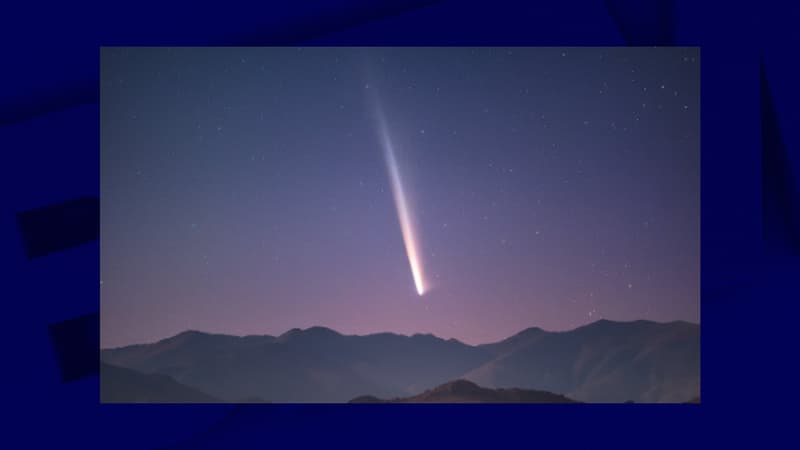It is called C/2023 A3, Tsuchinshan-Atlas, or simply the “comet of the century”, according to some specialists. This astral phenomenon of considerable magnitude, which has been traveling through the heavens for millions of years, is increasingly approaching the Earth for the first time in 80,000 years, to the great delight of astronomy fans, indicates the Futura-Sciences website.
Visible in the northern hemisphere from October 13.
The small body of rock and ice was detected in January 2023 by China’s Purple Mountain Observatory (Tsuchinshan), giving it the first half of its name. The second is due to the confirmation of its existence by a telescope from the South African ATLAS program.
Until now, you had to be in the southern hemisphere to see it with the naked eye. On social network X, many Internet users located in this area have already immortalized their passage.
In the northern hemisphere it will be visible from October 13 to the 30th of the same month. If the weather permits, “it will be evident” every afternoon when looking “in the direction of the setting sun,” according to Lucie Maquet, astronomer at the Institute of Celestial Mechanics and Ephemeris Calculation (IMCCE), located in the Paris-PSL Observatory square.
The study of his career is too short, “barely a year in retrospect,” to know precisely the path he has followed so far, he adds. It follows a “non-closed” orbit, and models suggest it could have traveled up to 400,000 times the Earth-Sun distance before reaching us.
Destruction risks
Late on Friday afternoon, the comet traveling at a speed of 240,000 km/h from the Oort cloud “risked” its life by passing as close as possible to the Sun. When comets approach our star, the Ice contained in its core sublimates and releases a long trail of dust that reflects sunlight.
This characteristic hair, the coma, is also a sign that the object is “outgassing.” The question is whether this degassing will not be too great, at the risk of disintegrating the unsuspecting visitor.
A catastrophe “always possible”, according to the astronomer, because the accumulation of ice and stones “may very well not resist the force of gravity of the Sun.” The good news is that C/2023 A3 appears to have a very massive core and therefore “there is a good chance it will survive” this step.
The first forecasts, revised downwards since then, suggested that it would be exceptionally bright as it passed near Earth. “It’s a surprise at the last moment, but in any case it will be a bright comet, that’s for sure,” according to Lucie Maquet.
Unpredictable course
As for its future direction, it is unpredictable. His solar odyssey will not be without consequences for his orbit, disturbed by the gravity of the stars he will encounter and by the weight loss cure that the Sun will inflict on him.
It follows an orbit that is not closed, and models suggest it may have traveled up to 400,000 times the Earth-Sun distance before reaching us.
The models used predict, without any commitment, that it could be “expelled from the solar system, to be lost among the stars”, according to the IMCCE bulletin of September.
Everything will ultimately depend on the encounters that C/2023 A3 makes during its journey through the Oort cloud, a few thousand years from now. It would be enough, the astronomer points out, for “it to find a body that would divert it enough to return to travel through the solar system.”
Source: BFM TV


